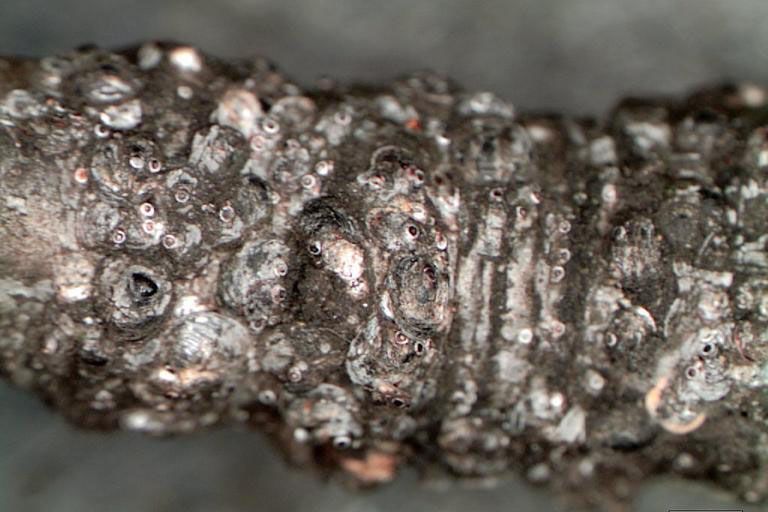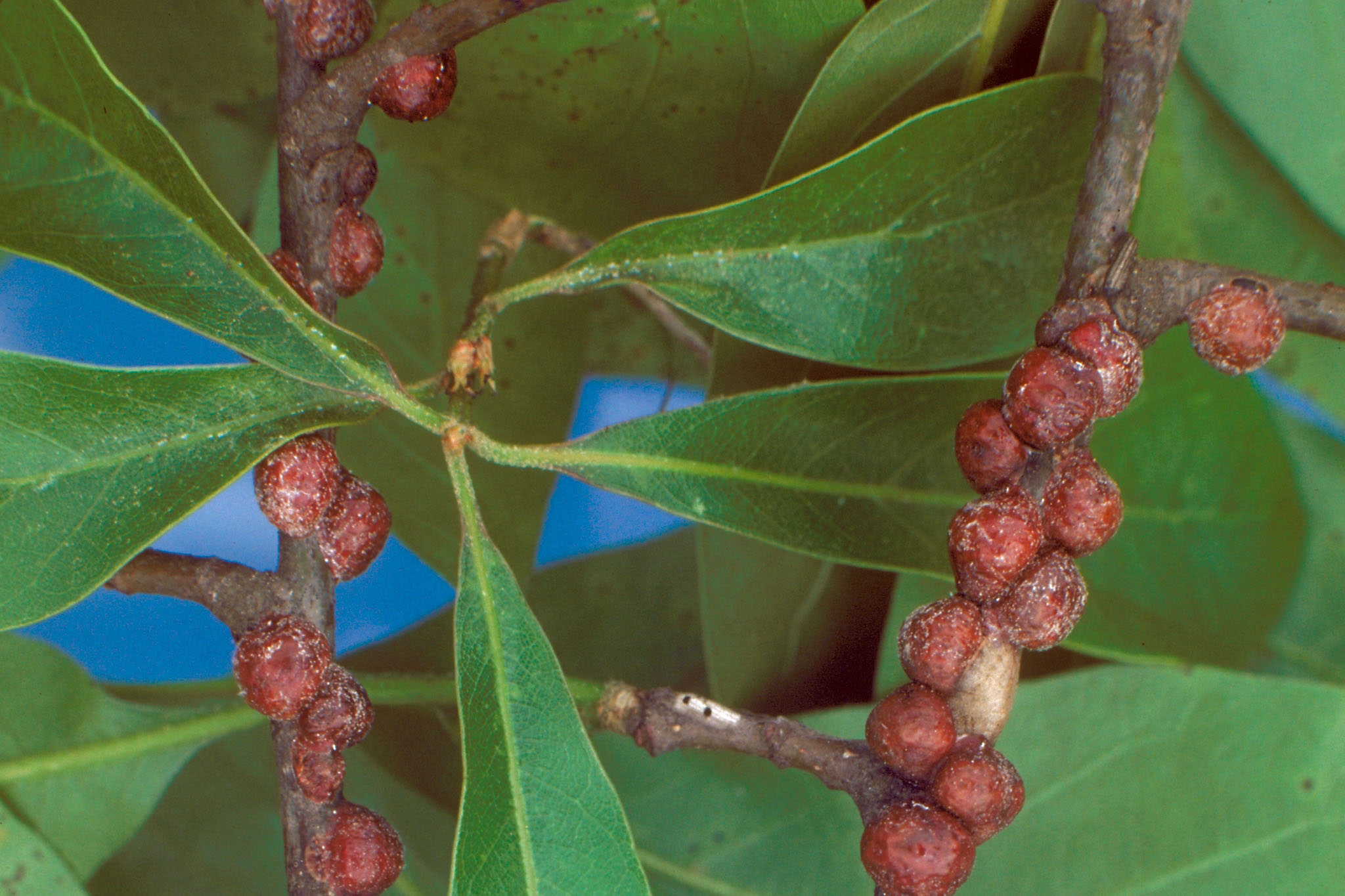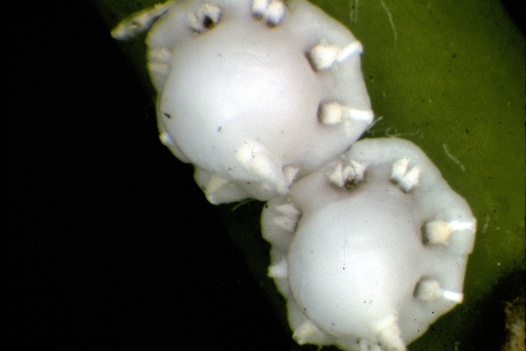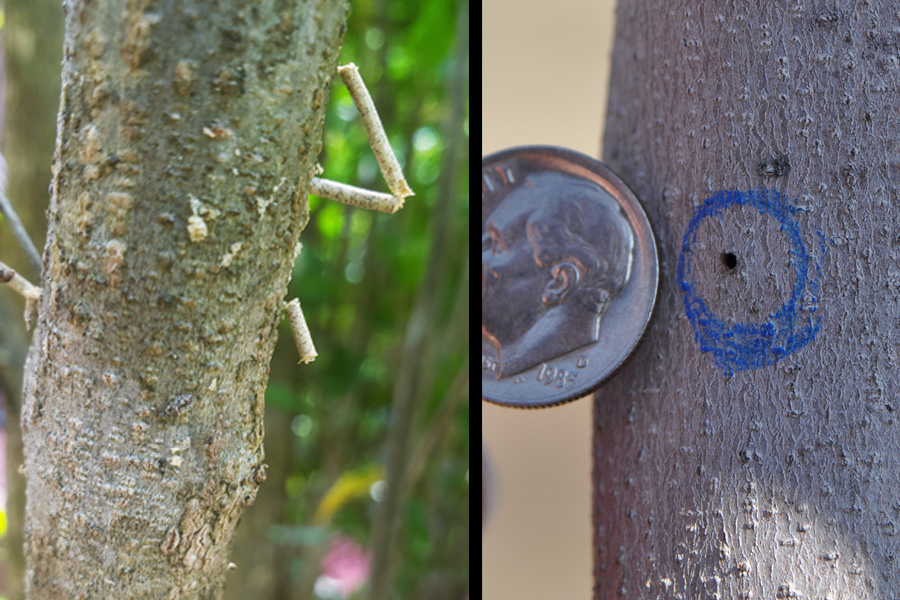Entomology
-

Whiteflies are common and recurrent insect pests of cotton in Georgia. The severity of whitefly damage varies from year to year based on the size of the pest population. The most abundant species of whitefly found infesting cotton in Georgia is Bemisia tabaci, commonly known as the silverleaf whitefly (SLWF) or sweet potato whitefly. Another species, bandedwinged whitefly (Trialeurodes abutiloneus), may also be present in Georgia cotton. This publication highlights whitefly biology, damage, sampling procedures, control methods, and tips for managing risk in cotton.
Phillip Marion Roberts, Apurba Barman, and Michael D Toews
|
-

The success of the Southeast Boll Weevil Eradication Program has played a major role in the recent revival of Georgia’s cotton industry. Along with these economic benefits, the remarkable success of the eradication program
has led to a significant decrease in insecticide use in Georgia cotton, and to substantial environmental benefits to growers and residents of the state.Phillip Marion Roberts
|
-

This report provides research and extension results for trials conducted by the University of Georgia Vegetable Team and its collaborators in 2023. Contributing authors include county and regional faculty as well as specialists from UGA’s horticulture, plant pathology, crop and soil sciences, and entomology departments. All research has been supported by the Georgia Commodity Commission for Vegetables.
Timothy Coolong and Ted McAvoy
|
-

Gloomy scale (Melanaspis tenebricosa) is a serious insect pest that affects maple trees in urban Georgia. It can go undetected for years. Affected trees can show branch dieback and canopy thinning after 6–10 years, when the population reaches extremely high densities. A waxy shield covering protects females from predators and insecticide exposure, and usually gives them a convex shape.
The armored scale wax covering on the bodies of gloomy scale can be detached using a knife. This is different than soft scales, such as wax scales, which are glued to the females’ bodies. Gloomy scales do not produce honeydew, also unlike soft scales. Female gloomy scales have piercing and sucking mouthparts that look like tubes that are inserted into the parenchyma cells (cells that synthesize and store trees’ organic products) in the epidermal layer of tree bark. Male gloomy scales do not have mouthparts. The black and gray dust that deposits on tree bark makes scale detection even more challenging over time, as they camouflage to the color and texture of the bark. This is especially true for trees planted along right-of-ways and parking lots.William G. Hudson and Shimat V. Joseph
|
-

Oak lecanium, Parthenolecanium quercifex (Hemiptera: Coccidae), is a common soft scale insect pest of oak trees and other woody plants. They infest trees under high stress, such as those planted in parking lots, greenscapes, and other urban areas. Like other soft scale insects, oak lecanium scales feed on tree sap, and they excrete the excess sugars as honeydew. Sooty mold fungus grows on honeydew, and its black color blocks sunlight and interrupts photosynthesis. Although lecanium scales have little immediate impact on twigs and branches, extensive infestation and subsequent feeding damage may weaken or kill the tree over time. The problems with lecanium scale are worsened in urban landscapes where local temperatures are generally higher. Higher temperatures decrease the relative number of parasites that feed on scale insects, and the high densities of surviving females continue to produce viable eggs.
William G. Hudson and Shimat V. Joseph
|
-

This publication is a guide to 110 common pest insects found in and around the home, including prevention and treatment options.
Brian T. Forschler, Dan Suiter, Lisa Ames, Richard Hoebeke, and E. Richard Hoebeke
|
-

Scale insects are very common pests of landscape trees
and shrubs, yet they often are overlooked when scouting.
They can, however, be responsible for chlorosis (loss of
green coloration of plants due to lack of chlorophyll),
branch dieback, or death of the plant. Wax scales are
part of the soft scale group as they produce soft, cottony,
powdery, or waxy covers that cannot be separated from
the scale body. Indian wax scale (Ceroplastes ceriferus);
Figure 1) and Florida wax scale (Ceroplastes floridensis;
Figure 2) are the common wax scale species that occur in
Georgia. Indian wax scale is prevalent in the eastern U.S.
from Florida to Maryland. Florida wax scale is found from
Florida to New York and westward to New Mexico.William G. Hudson and Shimat V. Joseph
|
-

This pocket field guide provides a summary of the common economically damaging species of ambrosia beetles in the Eastern and Southern U.S. It includes an easy-to-use morphological identification guide, external and internal plant-injury descriptions to help in infestation diagnosis, and trapping guidelines and protocols for researchers, Extension agents, and growers. The finished printed size of this guide is 3″ wide x 5″ high. Please contact the Publications Editor at extpublications@uga.edu to obtain a PDF suitable for commercial printing (with page bleeds).
Shimat V. Joseph, Brett R Blaauw, Angelita L Acebes, Pamela L Halliday, and Alejandra Monterrosa
|
-

Bumblebees are prone to catch your attention with their sonicating buzz or conspicuous and colorful appearance. They are robust, fuzzy-looking insects, with varying bands of coloration and a hairy abdomen.
This characteristic differentiates them from the look-alike carpenter bees. Carpenter bees have bald abdomens.
Similar to honeybees, bumblebees are in the family Apidae; they are social bees but survive or just one season,
unlike honeybees. Bumblebees usually are active from early spring through fall, visiting and collecting pollen
and nectar from flowers.
Bumblebees are distributed worldwide, with up to 260 species all over the globe. Most species are encountered in
the Northern Hemisphere, while others are located in Central and South America and northern Africa. Forty-nine
bumblebee species in the United States are known, and 17 of them are found in Georgia.William G. Hudson, Shimat V. Joseph, and Oluwatomi Daniel Ibiyemi
|